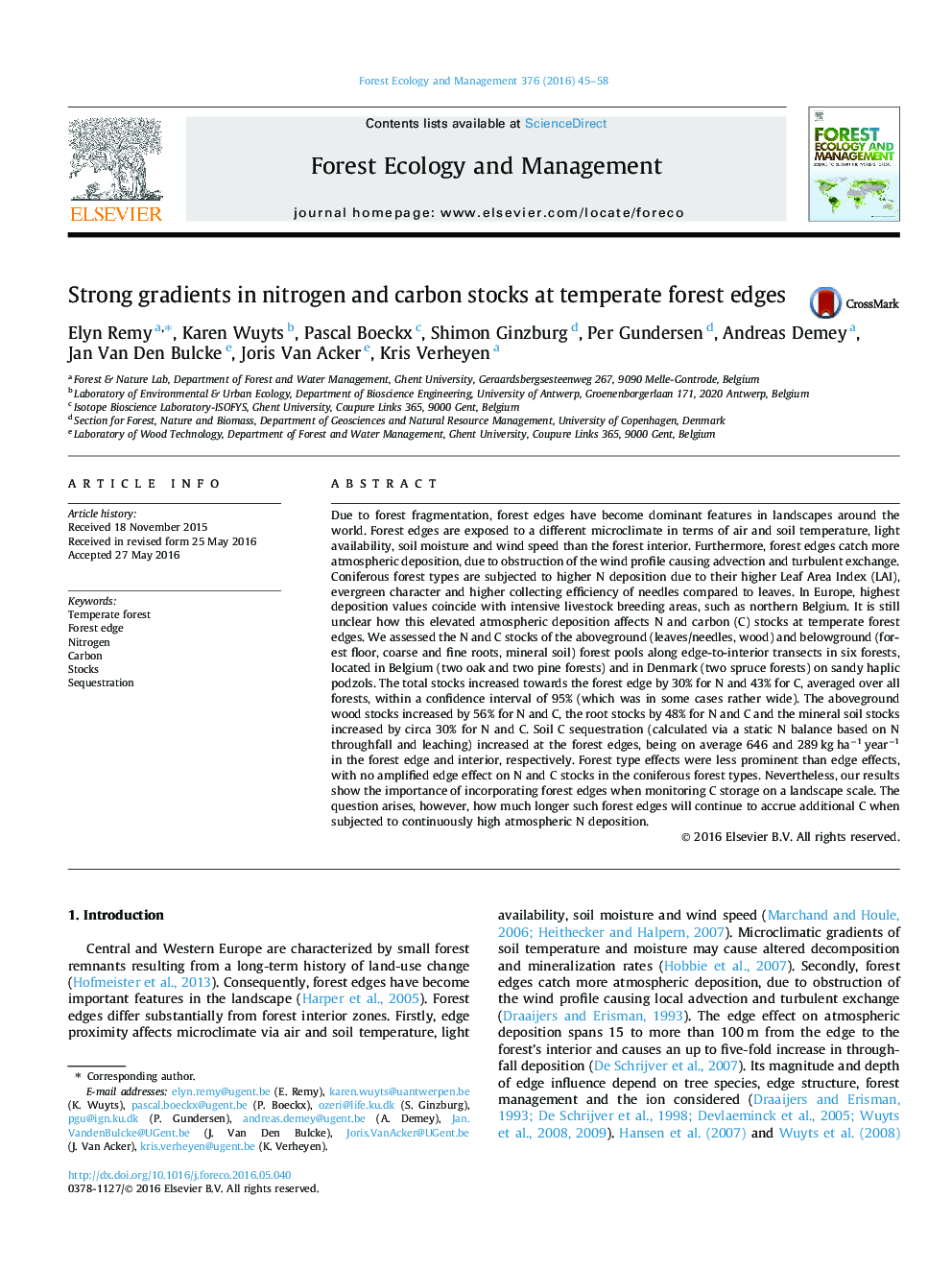| کد مقاله | کد نشریه | سال انتشار | مقاله انگلیسی | نسخه تمام متن |
|---|---|---|---|---|
| 6542095 | 159145 | 2016 | 14 صفحه PDF | دانلود رایگان |
عنوان انگلیسی مقاله ISI
Strong gradients in nitrogen and carbon stocks at temperate forest edges
ترجمه فارسی عنوان
شیب قوی در نیتروژن و کربن در لبه های جنگل معتدل
دانلود مقاله + سفارش ترجمه
دانلود مقاله ISI انگلیسی
رایگان برای ایرانیان
کلمات کلیدی
جنگل معتدل، لبه جنگل، نیتروژن، کربن، سهام، ضبط
موضوعات مرتبط
علوم زیستی و بیوفناوری
علوم کشاورزی و بیولوژیک
بوم شناسی، تکامل، رفتار و سامانه شناسی
چکیده انگلیسی
Due to forest fragmentation, forest edges have become dominant features in landscapes around the world. Forest edges are exposed to a different microclimate in terms of air and soil temperature, light availability, soil moisture and wind speed than the forest interior. Furthermore, forest edges catch more atmospheric deposition, due to obstruction of the wind profile causing advection and turbulent exchange. Coniferous forest types are subjected to higher N deposition due to their higher Leaf Area Index (LAI), evergreen character and higher collecting efficiency of needles compared to leaves. In Europe, highest deposition values coincide with intensive livestock breeding areas, such as northern Belgium. It is still unclear how this elevated atmospheric deposition affects N and carbon (C) stocks at temperate forest edges. We assessed the N and C stocks of the aboveground (leaves/needles, wood) and belowground (forest floor, coarse and fine roots, mineral soil) forest pools along edge-to-interior transects in six forests, located in Belgium (two oak and two pine forests) and in Denmark (two spruce forests) on sandy haplic podzols. The total stocks increased towards the forest edge by 30% for N and 43% for C, averaged over all forests, within a confidence interval of 95% (which was in some cases rather wide). The aboveground wood stocks increased by 56% for N and C, the root stocks by 48% for N and C and the mineral soil stocks increased by circa 30% for N and C. Soil C sequestration (calculated via a static N balance based on N throughfall and leaching) increased at the forest edges, being on average 646 and 289 kg haâ1 yearâ1 in the forest edge and interior, respectively. Forest type effects were less prominent than edge effects, with no amplified edge effect on N and C stocks in the coniferous forest types. Nevertheless, our results show the importance of incorporating forest edges when monitoring C storage on a landscape scale. The question arises, however, how much longer such forest edges will continue to accrue additional C when subjected to continuously high atmospheric N deposition.
ناشر
Database: Elsevier - ScienceDirect (ساینس دایرکت)
Journal: Forest Ecology and Management - Volume 376, 15 September 2016, Pages 45-58
Journal: Forest Ecology and Management - Volume 376, 15 September 2016, Pages 45-58
نویسندگان
Elyn Remy, Karen Wuyts, Pascal Boeckx, Shimon Ginzburg, Per Gundersen, Andreas Demey, Jan Van Den Bulcke, Joris Van Acker, Kris Verheyen,
